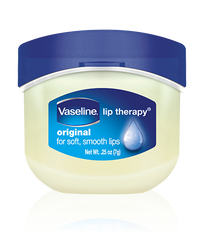9 Things Your First Aid Kit Must Have
The most important thing you can do after you buy a First Aid Kit is to categorize your First Aid Supplies. This will help you to ensure you're including the right supplies in your Kit to handle any First Aid emergency with ease.
Let's take a look at the 9 categories the Experts at MyMedic have created to help you if you've not already created a system of your own:
Now, let's take a look at one must-have item for your First Aid Kit from each one of these categories:
Tourniquets... You can bleed out and die in under 3-minutes and for that reason we love the RATS Tourniquet because of how fast and easy it is to use but as long as you are comfortable using what you have then that's what matters. Use what you know.
Nasopharyngeal Airways (NPA) are one of the easiest items to learn how to use but easily one of the least understood. If someone loses consciousness their tongue can obstruct their airway and prevent breathing, resulting in death. An NPA will keep the airway open and allow the person to breathe. Lube it up, slide it down, save a life!
We also love love love decompression needles!!! these are definitely for the trained medic though.
Not only does BurnJel this relieve the pain of a minor burn but it also protects against infection. Easy to apply, lightweight, and compact are a few things that make it hard not to include this in every First Aid Kit.
SensiWrap easily helps control joint movement and can be used in a pinch to hold a splint in place. Excellent product.
One category we don't think of very often as First Aid is Hydration. Most hydration products are preventative but in some cases they can be used when needed; an IV is a great example. One preventative Hydration product we love is Oral I.V., not to be confused with an actual IV. Oral IV helps support the hydration process and is best used prior to any physical activity. However, there is no substitute for water and as far as we can tell there never will be.
Ibuprofen is a must! It has an amazingly long shelf life and is perfect for managing pain.
Vaseline is a classic and has been around forever it seems like, over 150 years in fact. The uses are endless: lip guard, lube, cover burns and cuts, prevents infection, moisturize nostrils, prevent chafing, etc.
Paracord! is there any question of our 'must have' in this category? If you guessed paracord you're right! We've written about this before, the uses are practically endless.
EMT Shears are great for cutting through anything, especially clothing. We've even used them to cut through a penny!
We hope this has helped you. Now go out there and help someone!
Keep the conversation going and tell us what you think is a MUST HAVE in each category in the comments section.
 NEW ARRIVALS
NEW ARRIVALS
 BEST SELLERS
BEST SELLERS
 SUPERSKIN™
SUPERSKIN™
 COURSES
COURSES
 GIFT CARDS
GIFT CARDS
 The MyFAK Collection
The MyFAK Collection
 Specialty
Specialty
 The Ready Collection
The Ready Collection

 BLEED
BLEED
 OUTDOOR
OUTDOOR
 TOOLS & DEVICES
TOOLS & DEVICES
 AIRWAY
AIRWAY

 BLEED
BLEED
 OUTDOOR
OUTDOOR
 BURN
BURN
 TOPICAL
TOPICAL
 MEDICATION
MEDICATION
 SPRAIN & FRACTURE
SPRAIN & FRACTURE
 HYDRATION
HYDRATION
 TOOLS & DEVICES
TOOLS & DEVICES

 Supply Categories
Supply Categories
 Top Sellers
Top Sellers

























My personal favorite is the triangular bandage. Can be used for splinting, a bandage over a dressing, a tourniquet, as a tie to make a stretcher if needed, insulation to keep cold packs directly off skin, a wet compress, much more!!
Manual Blood pressure cuff, not only can you get a read on shock, or other problems, but it can be a tourniquet. Hot water bottle for aches and pains amoung other uses like an enema for severe constipation, epsom salt for sprains, strains, and bruising, as well as a great laxative. I love things that are dual purpose.
This probably isn’t regarded as a medical tool or item, but I would have to say duct tape. Duct tape is versatile. You can use it to help create a stint/ sling or to pull together an open wound.
Some items I use on every call: BP cuff, stethoscope, pulse oximeter. A few must haves: permanent marker, shears, OPA, NPA, quick clotting agent, pressure bandage, 4×4s, roller gauze, thermometer, splinting materials, pen light, aspirin, Vaseline gauze, sterile water. IMHO.
Betaine and alcohol swabs and a small bottle of hydrogen peroxide and cayenne pepper.
Leave a comment